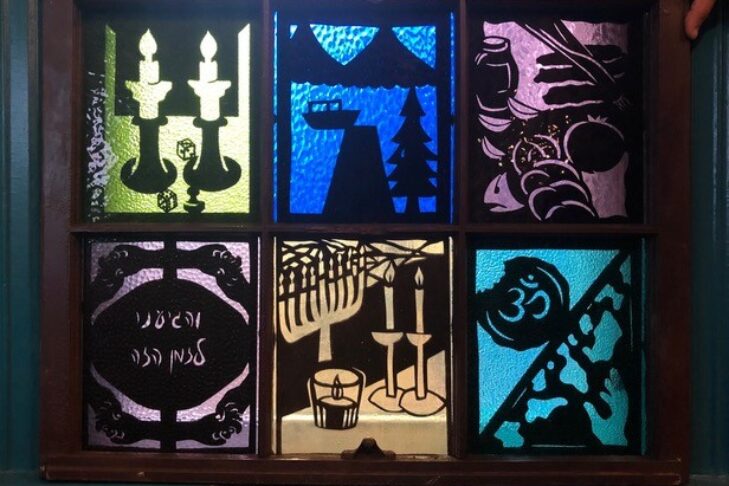I see traditions as glimpses into the fabric of a family, an opening through which to learn about them and their histories. Sometimes what we see is a recent innovation, sometimes a practice that’s been passed on from generation to generation. To me, the similarities are as fascinating as the differences. Is the tradition based on a religious requirement? A family joke? Does it depend on a food that’s only grown in one part of the world? I’m an anthropologist by training, so observing and asking questions about what we do and why comes naturally.
My daughter told me a story she read about a woman who was preparing fish. First she cut the head and tail off, then she cleaned off the scales and put it in the oven to cook. Her daughter asked, “Why do you cut the tail and the head off?” She said, “I don’t know. It’s how my mother did it.” The daughter asked, “But why?” After asking her mother and her mother’s mother, they found out that her great-grandmother’s pan was small, so she’d cut off the fish’s tail and head so it would fit inside.
I loved the conversations I had with families about their traditions. They thought together about what is meaningful to them and shared the reasons behind what they do. I learned about so many practices I’d never heard of, and I even have a few new ideas for my own family to try now. I loved the way that children know what they do, but not always why. Our conversations made some of the intentions explicit, helping to pass the meaning down from one generation to the next. We talked about tzedakah and how it encompasses so many of the activities we do to care for others. We talked about blending traditions from different religions, and about creating our own rituals that become meaningful as they are repeated year after year or week after week.
Some of my favorite secular traditions came from a family that has a dance party after dinner each night, a family that eats Chilean empanadas (which I’ve loved ever since living in Chile in college) on weekends, and a family that eats cake for breakfast on birthdays! The variety of religious traditions was fantastic, too, including making huge paper kites, neighbors coming together to decorate the street to light the way for Santa’s sleigh and lighting candles. You’ll have to come see the pieces in person to learn about all 18 of them.
I’m thrilled that the windows are being displayed at Woburn Public Library for many reasons, but one is that if you check out the window during the day and learn about a holiday that you’ve never heard of or a food you’d like to try, you can talk to the librarians and look it up!
If you visit the windows during the day, you’ll see that from the outside of the library, the designs will be faint, but from inside they’ll be lit by the sun. In the evening, they’ll be lit by the library light from inside, so you can see the designs from outside the building. If you look from the direction that’s not back-it, you’ll see the glass, but the cut paper designs will be hidden. With the light coming through, the paper cuts of these beautiful traditions appear. For me, this symbolizes the view we give neighbors into our houses at night, when the street is dark and our houses are lit. I hope you enjoy the glimpse that these 18 families have offered you into their homes, their traditions and their histories.
“Looking In” will be on display at Woburn Public Library from Dec. 9-18 as part of JArts’ “Brighter Connected” public art series. Learn more here.
This post has been contributed by a third party. The opinions, facts and any media content are presented solely by the author, and JewishBoston assumes no responsibility for them. Want to add your voice to the conversation? Publish your own post here. MORE


